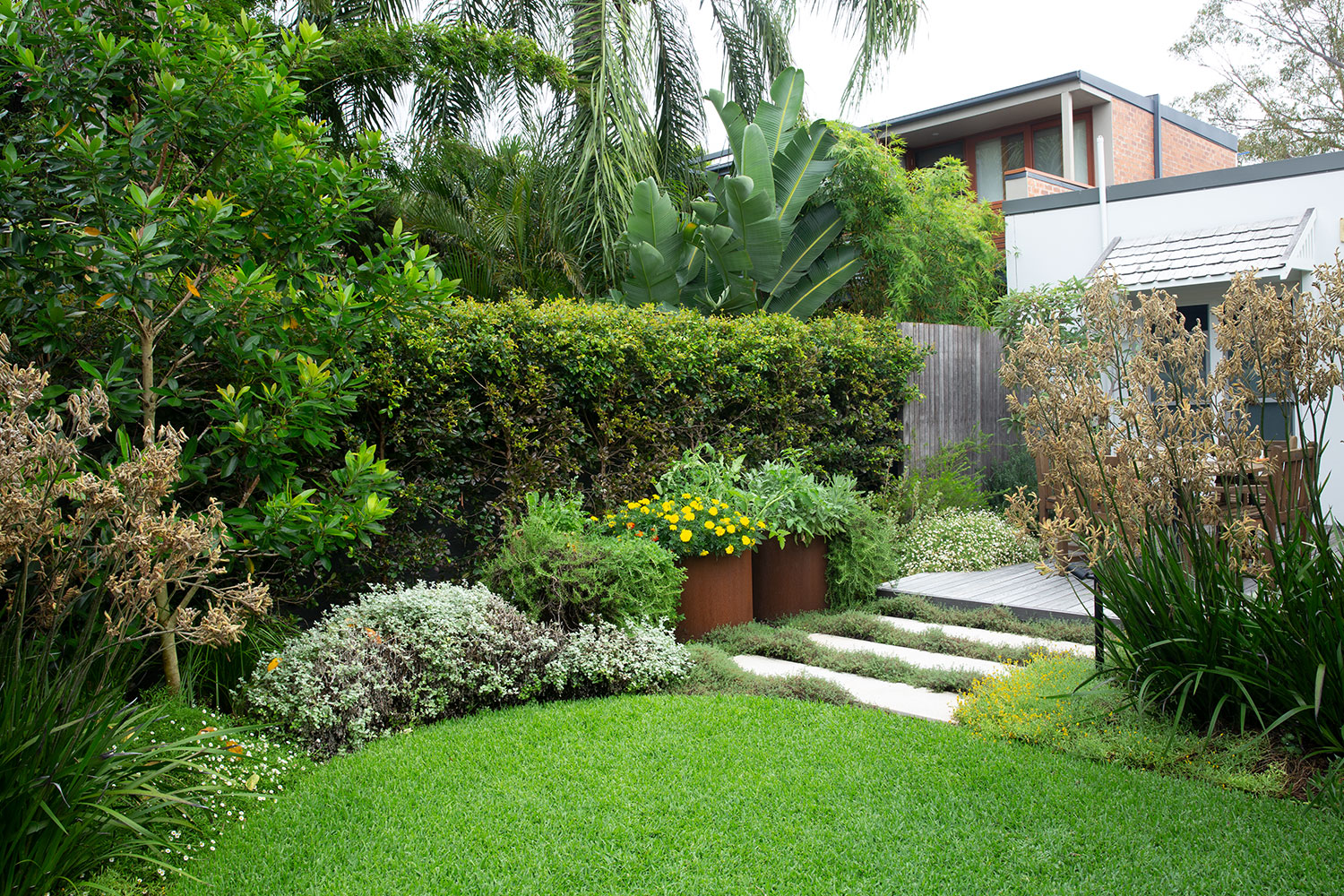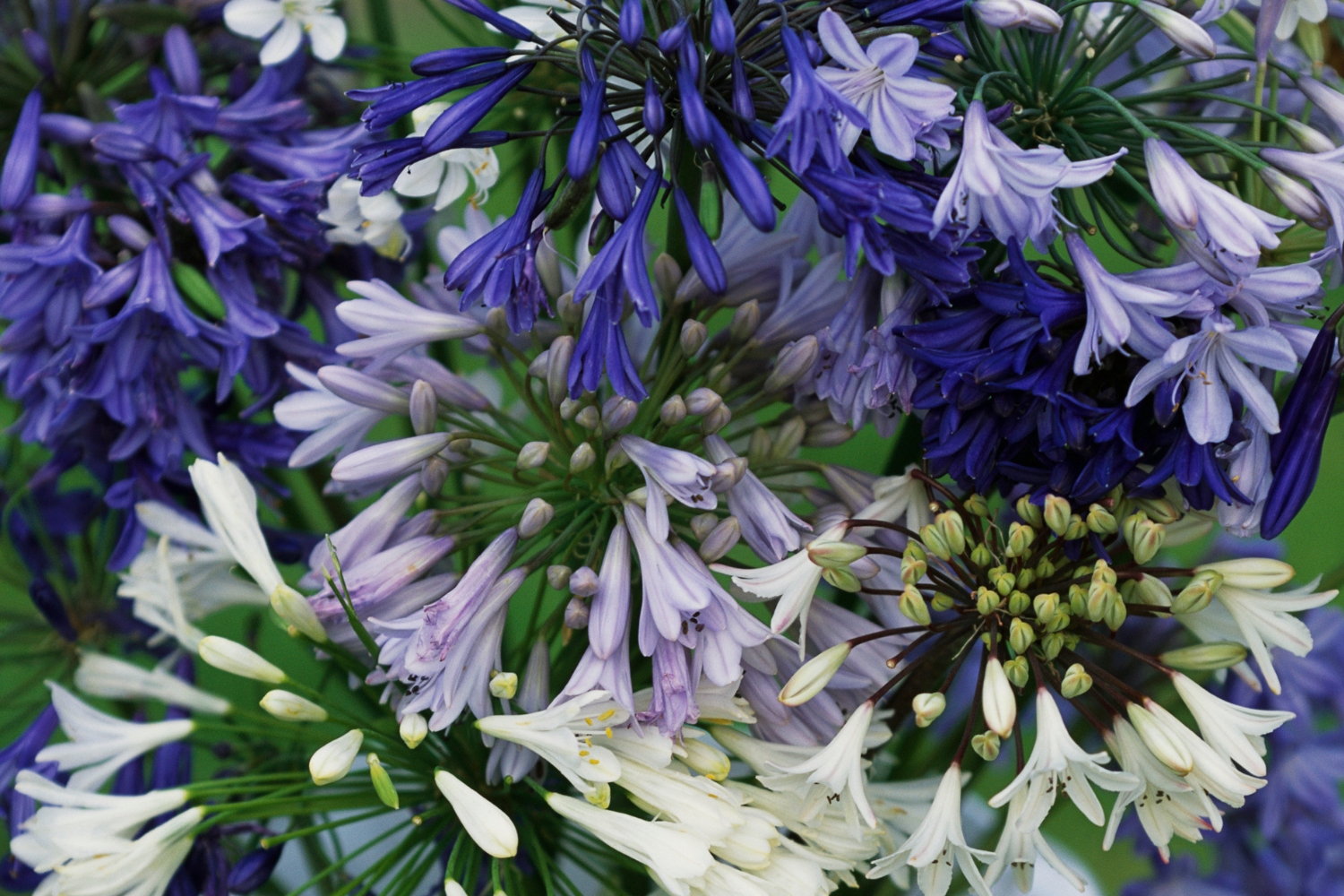Australian garden design explores our identity and culture, including the modern bush garden.
There are a couple of factors that influence Aussie garden design, but it’s our climate and weather that guide designers the most. With a myriad of temperatures and the uncertainty of rain, modern bush gardens are set apart from the rest of the landscaping world.
An additional factor? Aesthetics. Although harsh climates can be tough on our native plants, that doesn’t stop them from producing the brightest and most interesting foliage, fruit and flowers globally.
Both of these considerations have inspired many a designer to replicate the ‘bush garden’ in their way, including Melbourne-based designer Jim Fogarty.
Below is a walkthrough of Jim Fogarty’s Australian garden which won gold at the 2011 Chelsea Flower Show and Best in Show at the 2014 Hampton Court Palace Flower Show for Essence of Australia. See for yourself how you can create your modern bush garden, using native plants and contemporary features:
Go bold and gold
The devastation of bushfires close to his home inspired designer Jim Fogarty to create this garden called ‘Bushfire’, for a Garden World Cup.
See how the bold ochres explode against the soft grey foliage – representing gentle regeneration.

Palmy and pretty
Weave lush temperate rainforest plants, such as the cabbage-tree palm, native cycad (Macrozamia communis) and grass tree, in your garden adjacent to grevilleas. Then, imagine the pebbled path is a dry creek bed!
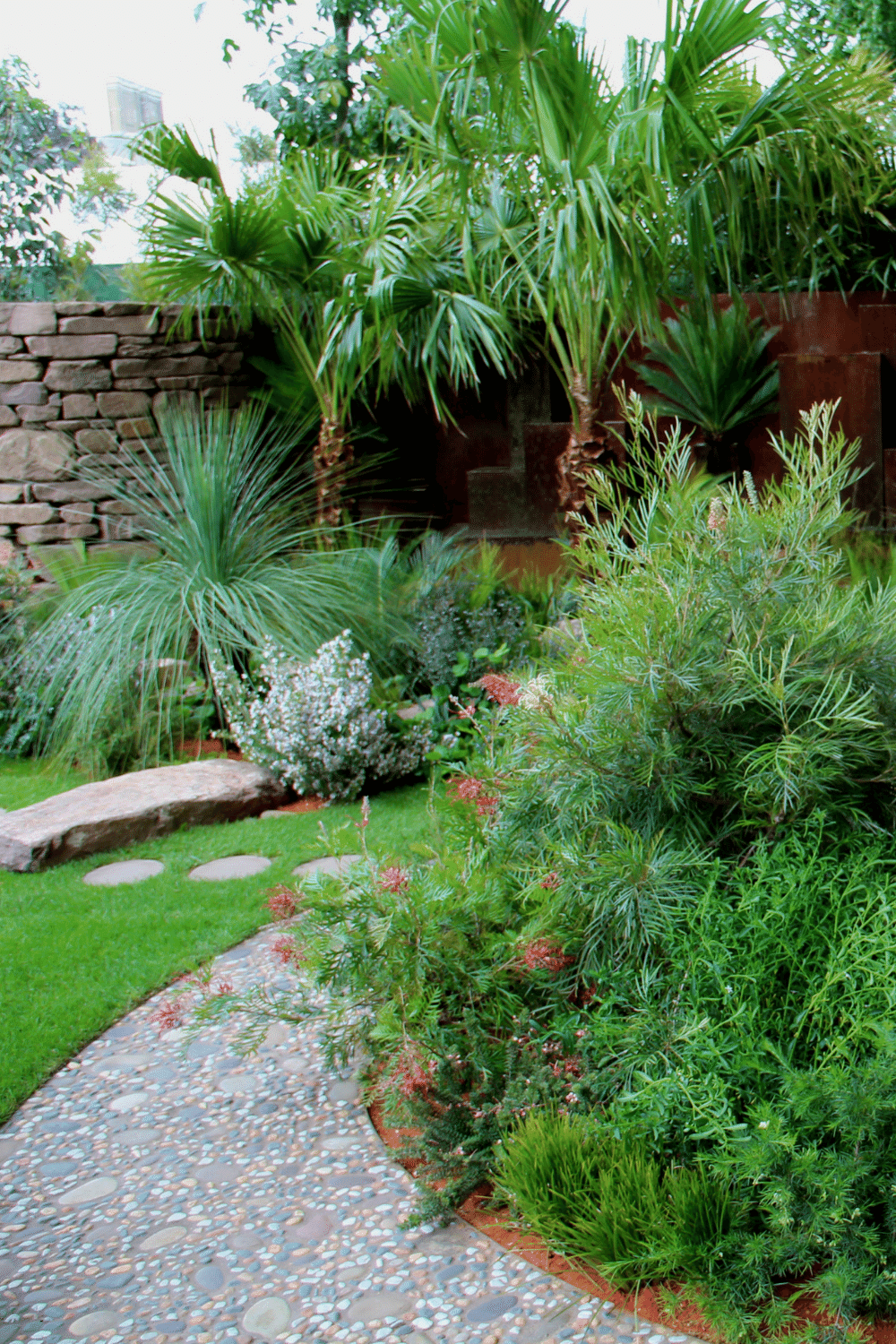
Say it in red
Use richly coloured red sand or gravel as mulch and to help showcase the plantings of the cut-leaf daisies.
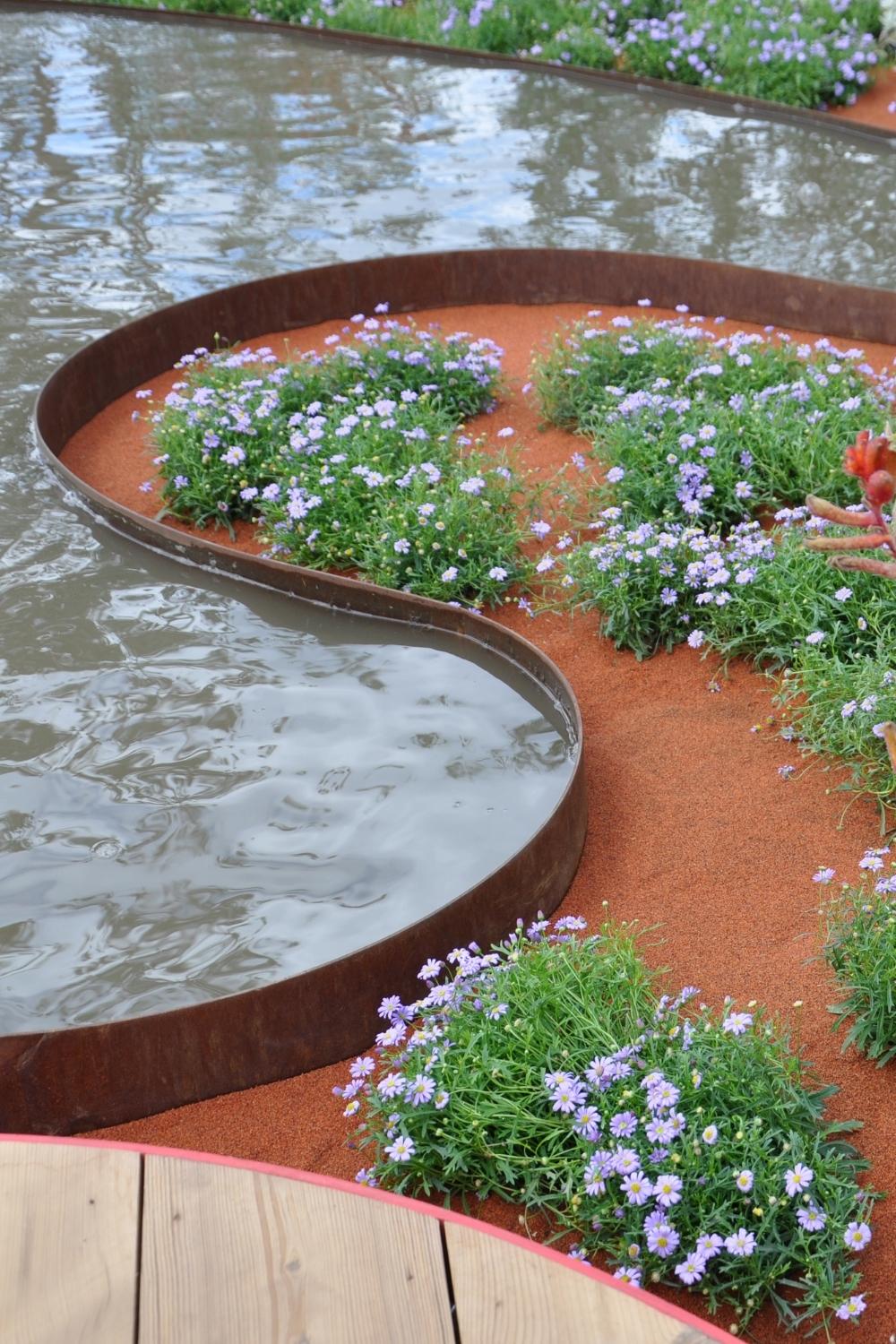
Decorating your bush garden sanctuary
The ancient burrawang cycad (Macrozamia communis) is softly decorative but also extremely hardy – it grows naturally in eucalyptus woodland but doesn’t mind a bit of sun when you put it in your garden.
Ornamental grasses add volume and softness when planted next to hardscapes such as a rendered wall.
The rectangular-shaped mudstone or mudrock comes in a lovely soft coffee colour. Being flat-sided, it’s ideal for stacking. And that’s a great chimney stack! There are oxides you can add to your cement render that will give you rich ochre colours, from red to orange to yellow. You can even get blue or green. Your choice!
Make your soft furnishings as striking as your landscape – bands of bright orange and sky blue are so Aussie!

Plants to use in a bush garden
Our unique flora is making quite the impression – not just in museums but in gardens around the globe. When you think of iconic Australian plants, there are gums, wattles and grevilleas. And they dominate in our backyards and parks.
But it’s our minor stars that are having a huge impact on gardens all over the world. They can be as quirky as a mass of kangaroo paws adding spike and spice in the Mediterranean. Even little lovelies – daisies, buttons and sneaky climbers – have infiltrated European, American and Asian gardens. So if you don’t have one, or some, of these in your garden, you’re letting the side down!

01
Native violet
Viola banksii
Turn a rocky road into an enticing path – grass trees are impressive and dominate, but little things fill out the picture. Line steps with native violets, their cute little white and purple flowers peeking through luscious greenery.

02
Kangaroo paw
Anigozanthos sp.
With flower heads shaped like a kangaroo paw, it’s no wonder this quirky plant (Anigozanthos sp) is much loved around the world. Originally from the dry environment of Western Australia, it has been bred to handle many climates – except deep shade and cold. And the wonderful colours? That’s the covering of fine velvety hairs.

03
Everlasting daisy
Bracteantha bracteata
Everlasting daisy, straw flower, paper daisy – call it what you will, but officially it’s Bracteantha bracteata – grow anywhere except wet or heavily shaded areas or in heavy soils. The flowers last from spring to autumn and, if you pick a few blooms for indoors, the plants will produce even more flowers! For pure gold, place them in company with chillies and yellow buttons.

04
Firewheel tree
Stenocarpus sinuatus
The firewheel tree (Stenocarpus sinuatus) is a clever thing. It grows in rainforests to about 30m – much smaller in gardens and where it’s cooler – but many of the mass of flowers in summer emerge at the bottom of the crown, so you can get up close and personal with them as you walk under the tree.
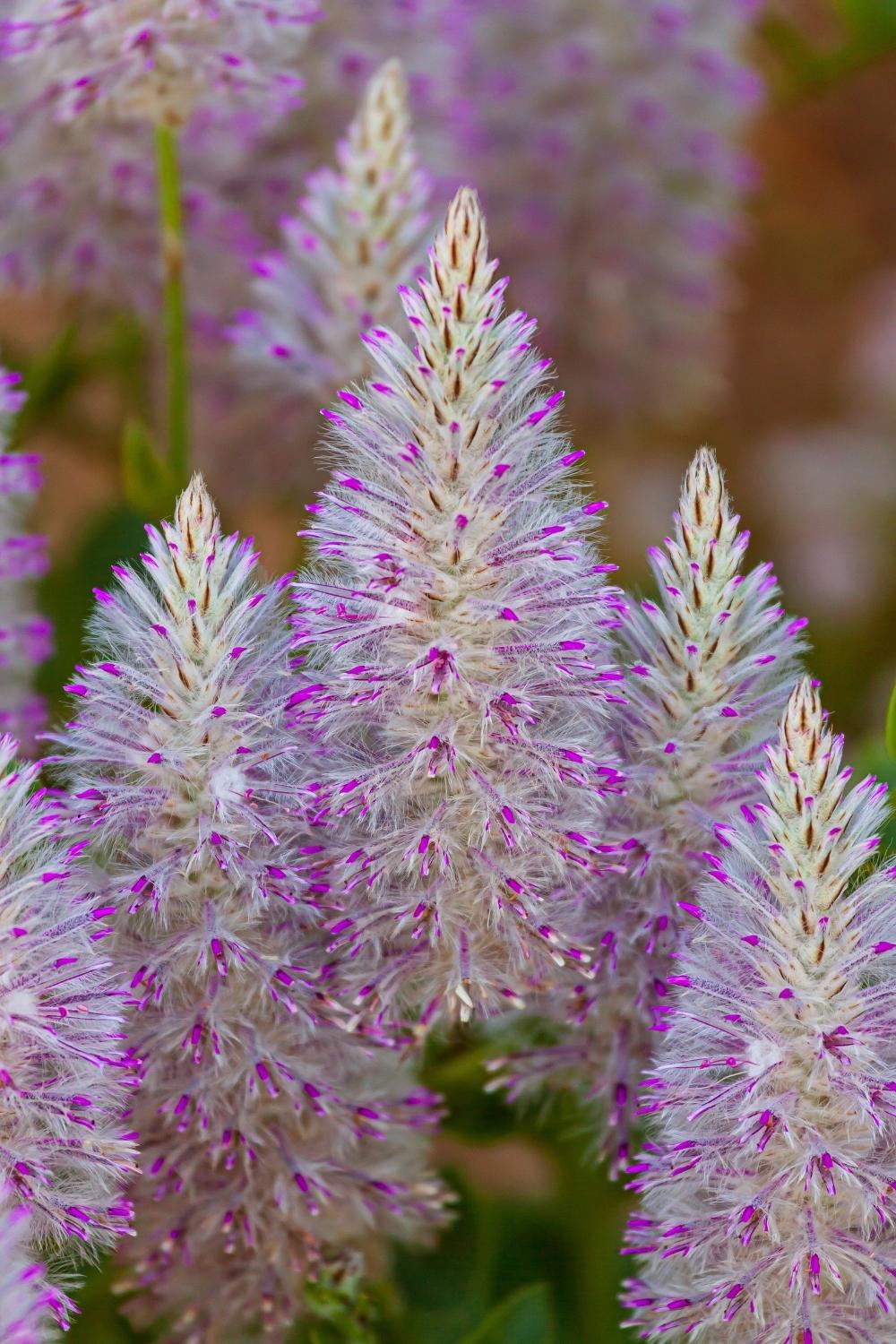
05
Lavender mulla mulla
Ptilotus sp.
You can still have the quintessential English garden with Aussie natives. Create whimsy and softness with lavender mulla mulla (Ptilotus sp). This blossoming flower will help curb the bright tones of kangaroo paw and firewheel tree, and add in a sense of calmness to your bush garden.
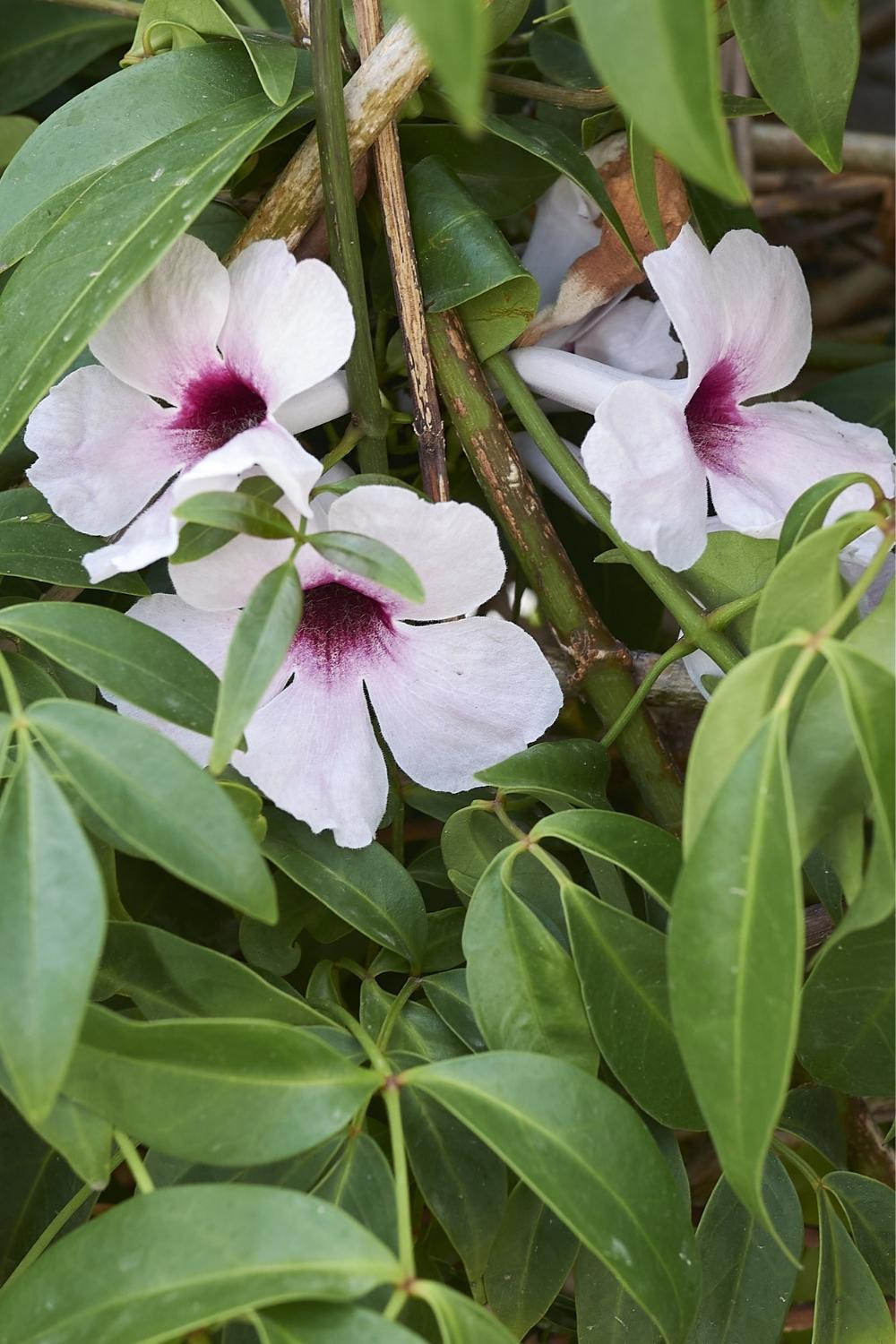
06
Native jasmine
Pandorea sp.
The perfume is delicate rather than intoxicating, however the native jasmine (Pandorea sp) is a hands-down winner in the climbing stakes. It’s a rainforest native and will clamber over anything and everything to reach sunlight. Most pandoreas flower profusely in early spring but the pink-throated bower of beauty (bower climber) flowers from spring to late autumn.

07
Swan River daisy
Brachyscome iberidifolia
WA’s spring wildflower season is world-renowned and the pretty blue Swan River daisy has made it into gardens. Sow a pack of seeds in autumn and you’ll get this in spring.

08
Fan flower
Scaevola
The fan flower, or scaevola, is named after a Roman soldier who plunged his right hand into a fire to prove his strength. The five one-sided petals on each flower represent the fingers of his left hand – tough and still terrific, in a bed or a hanging basket!

09
Ivory curl tree
Buckinghamia celsissima
Imagine celebrating Christmas in your garden with the ivory curl tree (Buckinghamia celsissima) in bloom – there’s no need to confect the northern hemisphere’s traditions of snow on trees when you get this lush proliferation of spiralling flowers. In the wild parts of north Queensland, the plant will grow to 30m, but in domestic gardens as far south as Melbourne it’s much smaller. Like many natives, this is a set-and-forget plant. It’s guaranteed to light up your summer!

10
Flannel flower
Actinotus helianthi
Flannel flower (Actinotus helianthi) is a pretty addition to any garden. It thrives in coastal heaths, scrub, sandy soils and exposed situations, so in most gardens it’s best in a pot with a well-draining mix, such as those suitable for succulents. It’s so charming you want to reach out and touch it, for the warm, woolly feel of blankets. Hence its name.

11
Golden penda tree
Xanthostemon chrysanthus
The mass of bursting stars on the golden penda tree (Xanthostemon chrysanthus) is spectacular. It flowers in late winter in the northern Queensland rainforests, where it grows to 15m. But in domestic gardens as far south as cooler temperate regions, it’s much smaller and can flower through summer and autumn. Put it in a sunny spot in well-drained soils where it will attract nectar-loving wildlife.
What makes native plants special
- Australia’s geographic isolation has meant many of our flowering plants are very different from those found in other parts of the world.
- Our island nation’s diverse topography and ancient soils have enabled plants to thrive under extreme and difficult conditions. They’re adapters and survivors – and unique!
- More of our beautiful natives are being adapted to thrive in our gardens, where the domestic soil profile has been changed during the past 200 years to suit traditional European conditions.
How to care for natives
Most natives thrive where sun, shade, watering, feeding, soil pH and structure suit their needs.
Only plants that belong to the Proteaceae family – such as banksias, grevilleas and waratahs – need special attention. Their roots have adapted to Australia’s ancient soils and should only be fed fertiliser low in phosphorous. Too much will kill them. So use feed that is designed specifically for native plants.
